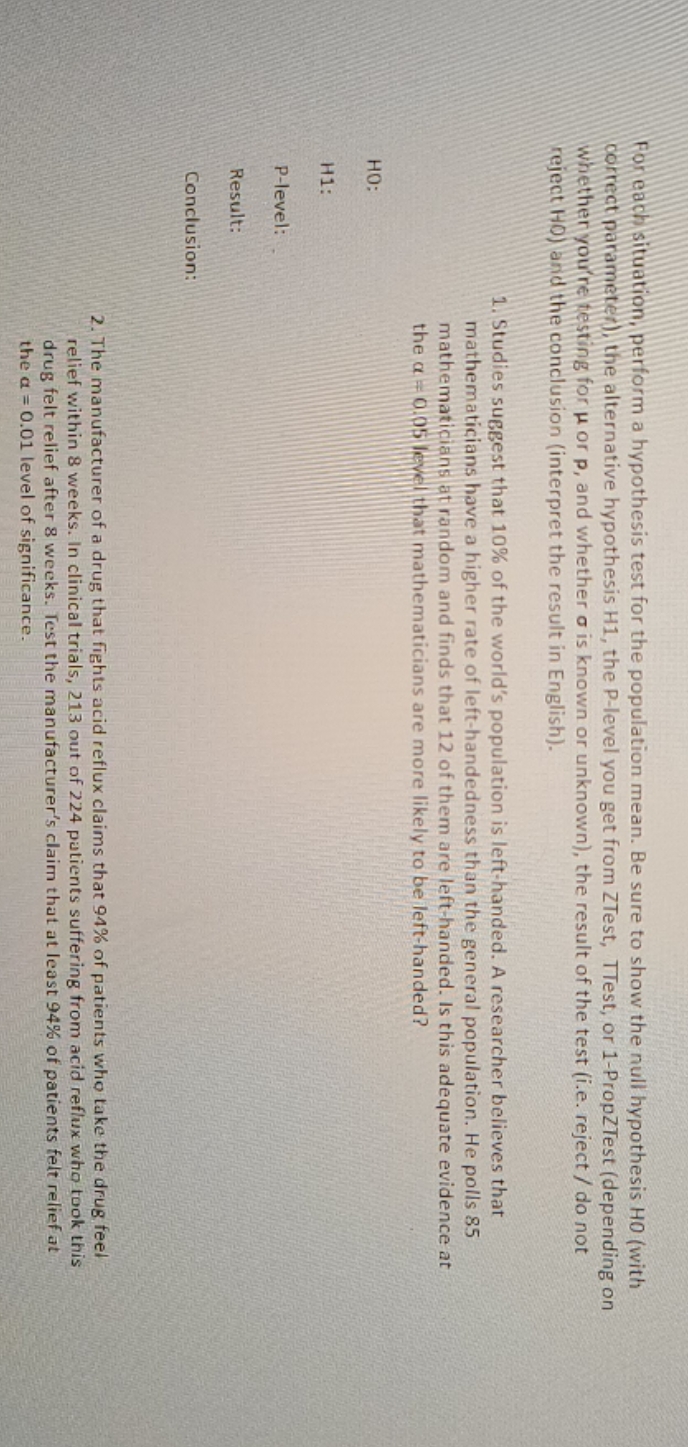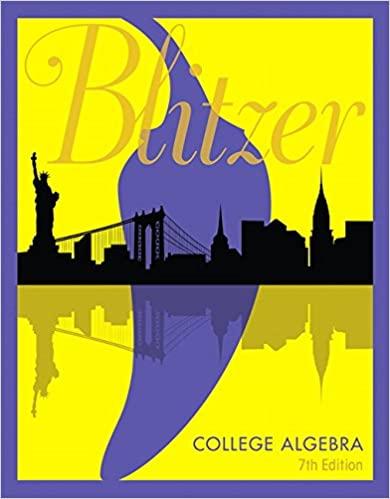Question
Each question needs to ve answered with HO: , H1: P-leavel, result, and conclusion. 1) Study suggest that 10% of the world's population is left
Each question needs to ve answered with HO: , H1: P-leavel, result, and conclusion. 1) Study suggest that 10% of the world's population is left handed a researcher believes that mathematicians have a higher rate of lefthandedness than the general population he pulls 85 mathematicians at random and finds 12 of them to be left handed is this adequate evidence that the a= 0.05 level at mathematicians are more likely to be left handed? 2) the manufacture of a drug that fights acid reflux claims that 94% of patients who take the drug feel relief within 8 weeks if clinical trials 213 out of 224 patients suffering from acid reflux who took this drug felt relief after 8 weeks test manufacturers claim that at least 94% of patients felt relief at the a=0.01 level of Significance. 3) It is thought that 12% of college football fans have some kind of superstition or ritual they performed before or during their team's game a sports writer wishes to know whether the introduction of a playoff has any effect positive or negative on the proportions of college football fans with superstitions a random sample of 305 college football fans found that 72 of them followed some sort of sports superstition is this adequate evidence that the a=0.01 level that the proportion of superstition football fans has changed? 4) A coffee lover claims that she can tell weather the cream was mixed with coffee, or the coffee was mixed with the cream. her claim is put to the test be being presented 8 cups of coffee, 4 of which had the coffee added first and 4 which had the creamer added first. If she gets all 8 correct, is this sufficient evidence at the a=0.05 level that the coffee lover can tell the difference? (hint there are 70 possible ways to guess which 4 cups are which and only 1 of those guesses is correct. you don't need 1-propzint for this problem and it much easier the you think)( This questions from 1935 is called the lady tasting tea problem and is a classic result of hypothesis tasting)

Step by Step Solution
There are 3 Steps involved in it
Step: 1

Get Instant Access to Expert-Tailored Solutions
See step-by-step solutions with expert insights and AI powered tools for academic success
Step: 2

Step: 3

Ace Your Homework with AI
Get the answers you need in no time with our AI-driven, step-by-step assistance
Get Started


